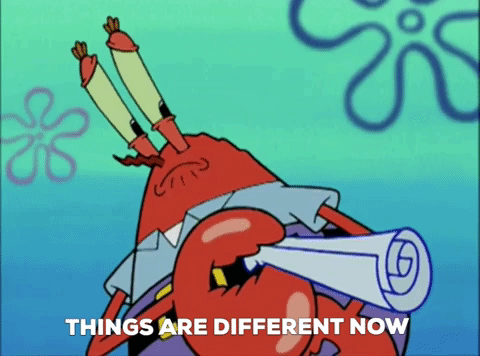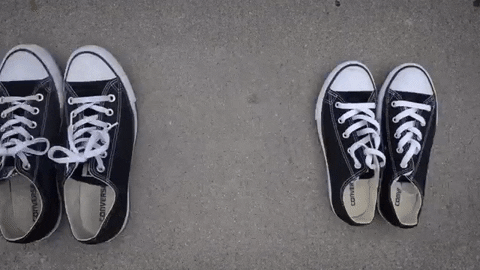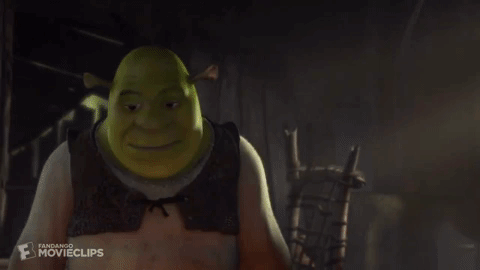You are not bound to who you thought you should be.
Think back to five-year-old you. Who did they want you to be? What kind of life did they want future you to have?
Chances are, that isn’t the path you’re on anymore. According to a 2019 survey, only 10 per cent of respondents are currently employed in their childhood dream job. An additional 14 per cent held their childhood dream job at one point, but don’t anymore, and a whopping 76 per cent never brought their childhood aspirations to fruition.
So what happens? Why do so many people leave what they once called their dream jobs; and why do so many more never realize their childhood dreams in the first place?
Well, maybe it’s because those aren’t their dreams anymore.

What this survey doesn’t tell us is what portion of respondents realized, before entering the workforce, their childhood dream job was no longer what they wanted to do. Or what portion of respondents tried to pursue their childhood dreams and changed plans last-minute. We do know, though, thanks to the National Center for Education Statistics, nearly one-third of college or university students switch majors at least once during their education.
So, we can infer that maybe, people are beginning to pursue their childhood dream careers and then branching off to do other things.
But how come?
The best years of your life?
Despite what we’re commonly led to believe, your 20s is often a fairly difficult period. This is due, in part, to the changing and often contradictory markers that signify adulthood.

Throughout the mid-to-late 20th century, the transition to adulthood became defined by what academics Richard Settersten Jr., Timothy Ottusch and Barbara Schneider call the “big five” traditional social markers:
- Finishing school;
- Finding a job;
- Leaving home;
- Getting married; and
- Having children.
However, today, scholars say this life trajectory is fulfilled by far fewer individuals – school is more expensive, so finishing takes longer. It’s harder to become financially independent, so leaving home and having children are delayed – you get the picture.
Plus, these so-called “objective” life events fail to account for the opportunities and experiences that are – or aren’t – available to young people “depending on their family backgrounds and resources.” And, notes writer Sara Jaffe, they constitute a cis/heteronormative “fantasy of adulthood,” which she observes often isn’t plausible or desirable for queer and/or trans people.
Not only that, but many experts understand the transition to adulthood to be based just as much on perception as it is tangibility; whether you’re an adult depends largely on whether you “feel” like an adult. And, that “feeling” is based on abstract indicators like “taking responsibility for oneself” and “making independent decisions.” How do you measure those?

All this culminates in your 20s (or slightly earlier, or slightly later, depending on your unique circumstances) being a markedly “confusing and lonely” time. You’ll likely undergo a phenomenon come to be known as a “quarter-life crisis,” in which you question, well, everything, abandon your old dreams and adopt new ones.
According to Harvard Business Review, a quarter-life crisis happens in four stages:
Stage one: trapped in outdated dreams
You’ve been conditioned to believe the “big five” social markers are necessary, or even inevitable, so you’ve begun to pursue them. Maybe you’re in a program that corresponds with the career five-year-old you wanted. Maybe you’ve even secured that career. You might be in a relationship with someone you really like – but, still, it just doesn’t feel right.
In this stage, you feel constrained, confused and – simply – trapped. You don’t know if where you’re headed is what you want anymore; but, even more dauntingly, you don’t know what else you would or could do. And, you might even start to resent yourself for not finding fulfillment in your childhood dreams.
“I’m achieving everything five-year-old me wanted. Why aren’t I happy?”

Stage two: letting go
Here, you still don’t know what exactly you want to do – but you know you can’t keep being unhappy. So, you leave that program, or that job, or that partner and…that’s it. You leave, because you know you can’t stay miserable, but you feel lonely, isolated and lost.
“I have to get out of here.”
Stage three: reflecting and reconfiguring
This is generally considered to be the toughest part of a quarter-life crisis – you’ve committed to leaving your old dreams behind, you’re still feeling lost and isolated and you inevitably begin to self-reflect about what you actually want.
Think: that one scene in every Shrek movie where a sad song plays while he contemplates what to do next while fearing he’ll lose everything he’s worked for so far.
“What on Earth am I going to do now?”

Stage four: chasing new dreams
Eventually, your sad Shrek moment will lead you to some realizations. You won’t have it all figured out (spoiler alert: no one ever has it all figured out) but you’ll develop some ideas of what you want your life to look like. Your new dreams.
You’ll start going out more; you’ll try new things, make new friends and find new interests. And, some of them won’t work out – you’ll still have moments where you feel uninspired or unfulfilled. But, overall, you’ll have a renewed enthusiasm toward life. You’ll sleep a little better and start each day with just a little bit more energy.
“This is it; I’m finally where I’m supposed to be.”

The scariest years of your life
While, for clarity, this article presented the stages of a quarter-life crisis as linear and distinct, they rarely play out like that in practice. Stages overlap, repeat and bleed into one another so seamlessly it can be hard to tell them apart. And, worst of all, their magnitude cannot be understated – a quarter-life crisis constitutes the complete uprooting of everything you thought you were and everything you thought you wanted to be.
That’s freakin’ terrifying.
The early-to-mid stages of a quarter-life crisis, in particular, may make you feel like you’ve failed: you abandoned your childhood dreams, after all. You couldn’t tough it out to make five-year-old you proud. How shameful.
But here’s the thing about five-year-old you: they don’t exist anymore. Their essence, or a piece of their childhood wonder and innocence, may stick with you, sure, but the version of you who wanted the life you left behind? They’re gone. Your job – your only job – is to serve the version of you that exists now. The 76 per cent of people who never held their childhood dream job didn’t fail at their ambitions; they evolved new ones.

Think back to five-year-old you. Who did they want you to be?
We’ll answer that for you: they would want you to be happy – and they would be so proud.
Coming to terms with change? Here’s how to handle uncertainty.
Follow IGNITE on Facebook, Instagram and Twitter for all things student life.
